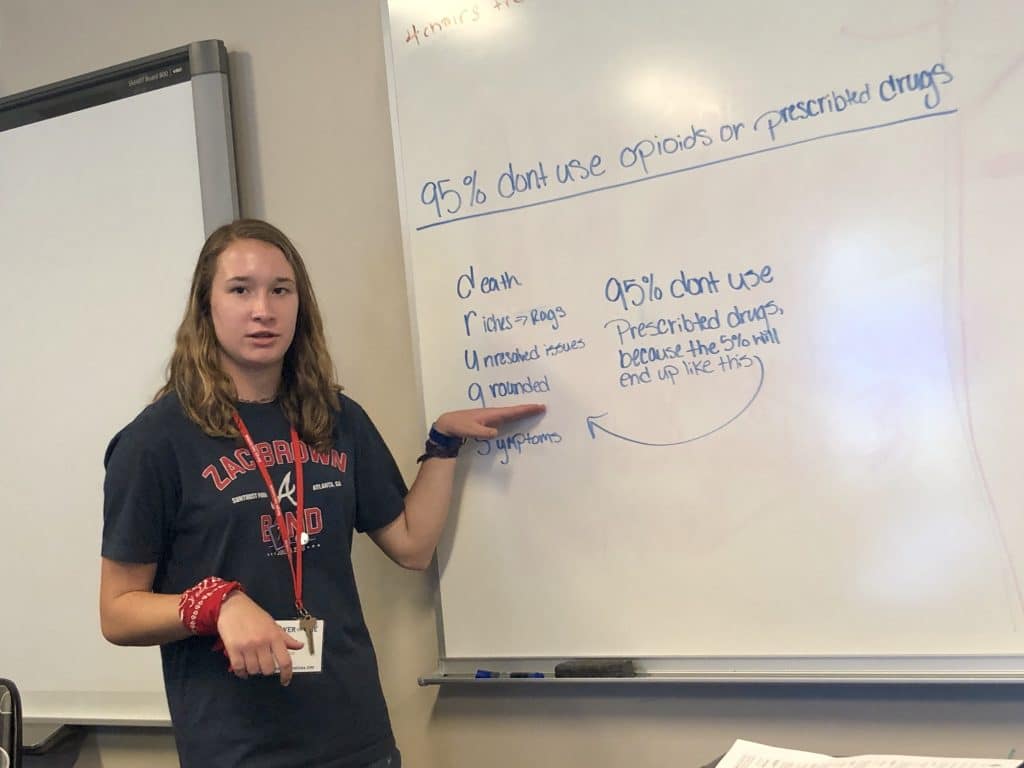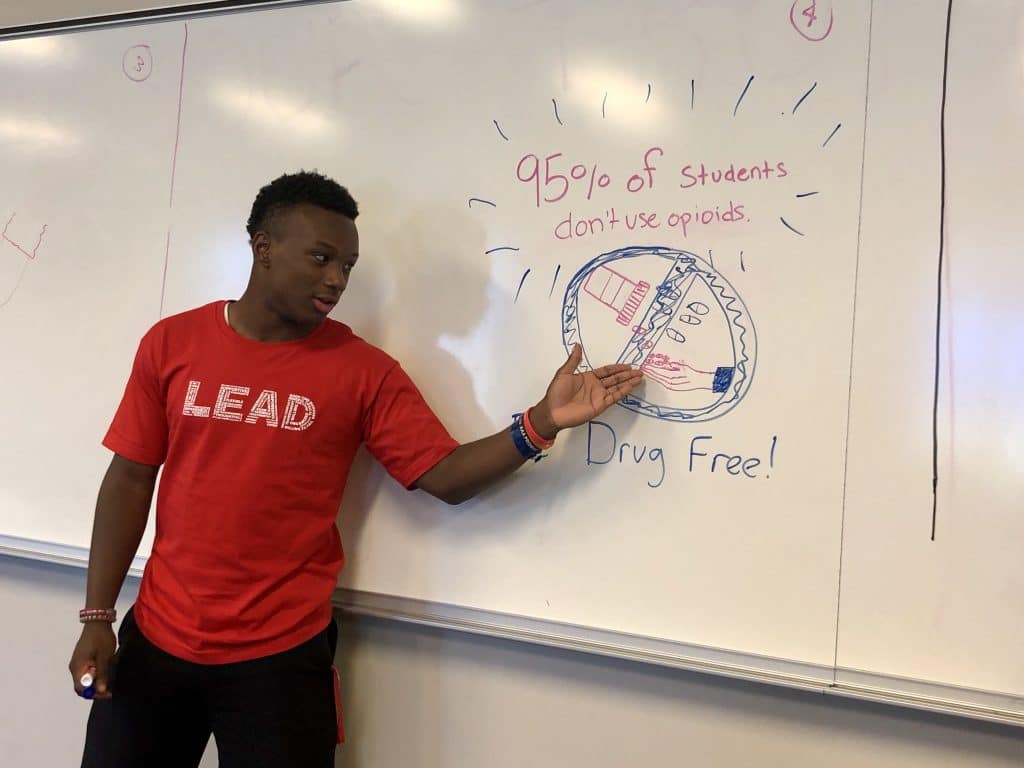
What are Social Norms?
They are the behaviors, attitudes and/or standards that the majority of people in a group think are acceptable or unacceptable; the norm. What people do is influenced by what they think their peers are doing. If people think that a certain behavior is typical or the norm, they are more likely to participate in it because they believe most are doing it, and they want to belong.
However, sometimes a norm or behavior is misread or misperceived, and people think that their peers engage in risky behaviors much more than they really do.
What is a Positive Social Norms Campaign?
A Positive Social Norms Campaign is one way to clarify or correct certain misperceptions of norms and promote positive social norms or behavior.
For example, let’s say that many high school students at a certain school think that the majority of people their age misuse prescription drugs. As a result, they see it as socially acceptable (a norm) and, in turn, they decide to misuse prescription drugs. They just want to belong. If teens think everyone’s doing it or most of their peers are, they might feel greater pressure to engage as well. However, let’s say that, in reality, most high school students at this school don’t misuse prescription drugs. The purpose of a social norming campaign in this situation is to change the students’ attitudes, behavior and perception about misusing prescription drugs by communicating the truth that the majority do not do this. Then, they begin to see misusing prescription drugs as NOT the norm (so, less socially acceptable) and fewer people do it.

Follow these steps to conduct your own Social Norms Campaign!
Step 1: Start planning early! Look at the substance abuse data from your county or local school via this link. Decide what statistic stands out to your youth. Make sure it shows the majority of youth are exhibiting a positive behavior.
Step 2: Conduct focus groups with youth to brainstorm a campaign message like the one above. Have your youth come up with two to four ideas first, and then have them narrow it down to one or two.
Ask your youth:
- As they think back to school, what messages do they remember seeing around the school?
- Was it the colors? Was it the graphic? Was it the message? What colors stand out on posters or banners currently in their schools?
- Where were the messages they remembered located? (Football field, hallways, bulletin boards, banners in the lunchroom?)
- What message would they want to create for their school based on the data?
- How do they want to display the message?
- Do they also want to reach parents? Do they want to include an article for the school’s parent portal, newsletter or website to get the message out to parents?
Step 3: Share final campaign message(s) and plan with school administrators to get feedback.
- Share plan of action with administration, teachers, etc., including a plan for evaluation and give clear instructions
Step 4: Create your message(s) and display the message(s) on a banner or poster at a local school, put it on the school’s newsreel or share on social media (wherever youth identify to be the place where THEY notice messages).
Step 5: Order and/or print the materials for the campaign. You can partner with a print shop, print them yourself or have them printed at your school.
- Set up delivery of materials with your contact person at the school, etc.
Step 6: Conduct your social norms campaign.
Step 7: Evaluate your campaign via surveys, focus groups, etc.
- Think about who you are evaluating and determine how you should do it.
- Surveys should be only a few questions and should include questions like: “Did you see or hear the message….?” “Do you think this is an important message for your peers to hear?”
- Focus groups should include similar questions but go in more depth about what parts of the message stood out, if the message impacted their attitudes, perceptions and/or knowledge and ways the campaign can be improved.
Step 8: Thank the school administrators and others involved, share the results and ask for their feedback about the campaign.
Make sure you celebrate your accomplishments. You are making change in your community. That’s something to be celebrated!
For more information and resources on how to conduct the campaign, contact Kimberly Wilson at kimberly@guideinc.org.
